 |
 |
 |
| |
Low rates of testing for sexually transmitted infections in an insured cohort of men and women living with HIV
|
| |
| |
IAS 2021 July 18-22
PRESENTER
J. Carlo Hojilla
AUTHORS
J.C. Hojilla * (1,2), V. Sarovar (1), I. Park (3), C.B. Hare (4), S. Slome (5), M.J. Silverberg (1), D.D. Satre (1,2).
(1) Kaiser Permanente Northern California, Division of Research, Oakland, United States,
(2) University of California San Francisco, Department of Psychiatry and Behavioral Sciences, San Francisco, United States, (3) University of California San Francisco, Department of Family and Community Medicine, San Francisco, United States, (4) Kaiser Permanente San Francisco Medical Center, San Francisco, United States, (5) Kaiser Permanente Oakland Medical Center, Oakland, United States
BACKGROUND: Guidelines recommend annual testing for bacterial sexually transmitted infections (STI), including gonorrhea/chlamydia (GC/CT) and syphilis, among persons with HIV (PWH). We used the prevention index (PI) as a quality-of-care indicator to quantify the extent to which STI testing was completed at guideline-recommended frequency among PWH in Kaiser Permanente Northern California.
METHODS: The PI is the proportion of person-time covered by a recommended service divided by the total person-time that an individual is eligible for that service. PI scores for GC/CT and syphilis from 2015-2019 were calculated overall and by calendar year using data from the electronic health record (EHR). We defined scores '¥90% as indicating compliance with testing recommendations. Data on demographics, smoking status, history of alcohol and drug use disorders, and HIV viral load were also extracted from the EHR.
Neighborhood-level socioeconomic status was assessed using the neighborhood deprivation index. We estimated adjusted prevalence ratios (aPR) and 95% confidence interval (95% CI) using Poisson regression with robust variance to identify factors associated with overall GC/CT and syphilis PI scores '¥90%.
RESULTS: Among 9655 PWH, mean age was 48 (range 18-90); 52.9% were white, 70.0% men who have sex with men, and 9.6% female. Overall mean PI scores were 58.1% (SD 38.6%) and 72.5% (SD 33.2%) for GC/CT and syphilis, respectively, indicating testing rates below guideline-recommended frequency. Testing rates for GC/CT increased from 49% in 2015 to 62% in 2019, while rates for syphilis remained stable between 71%-74% during the same time period. In adjusted analyses, older PWH (aPR 0.75 [95% CI 0.72-0.77]), women (aPR 0.24 [0.18-0.31], current smokers (aPR 0.81 [0.72-0.91]), and persons with a detectable viral load (aPR 0.88 [0.77-1.00]) were less likely to receive annual GC/CT testing. Similarly, older age (aPR 0.87 [0.85-0.89]), female sex (aPR 0.30 [0.24-0.36]), smoking (aPR 0.90 [0.83-0.98]), and detectable viral load (aPR 0.88 [0.80-0.97]) were associated with lower syphilis testing rates. We also found that lower neighborhood-level socioeconomic status was associated with lower syphilis testing rates (aPR 0.86 [0.80-0.92]).
CONCLUSIONS: Our findings underscore a critical lapse in HIV care. Efforts are needed to improve STI testing, particularly among key PWH subgroups.
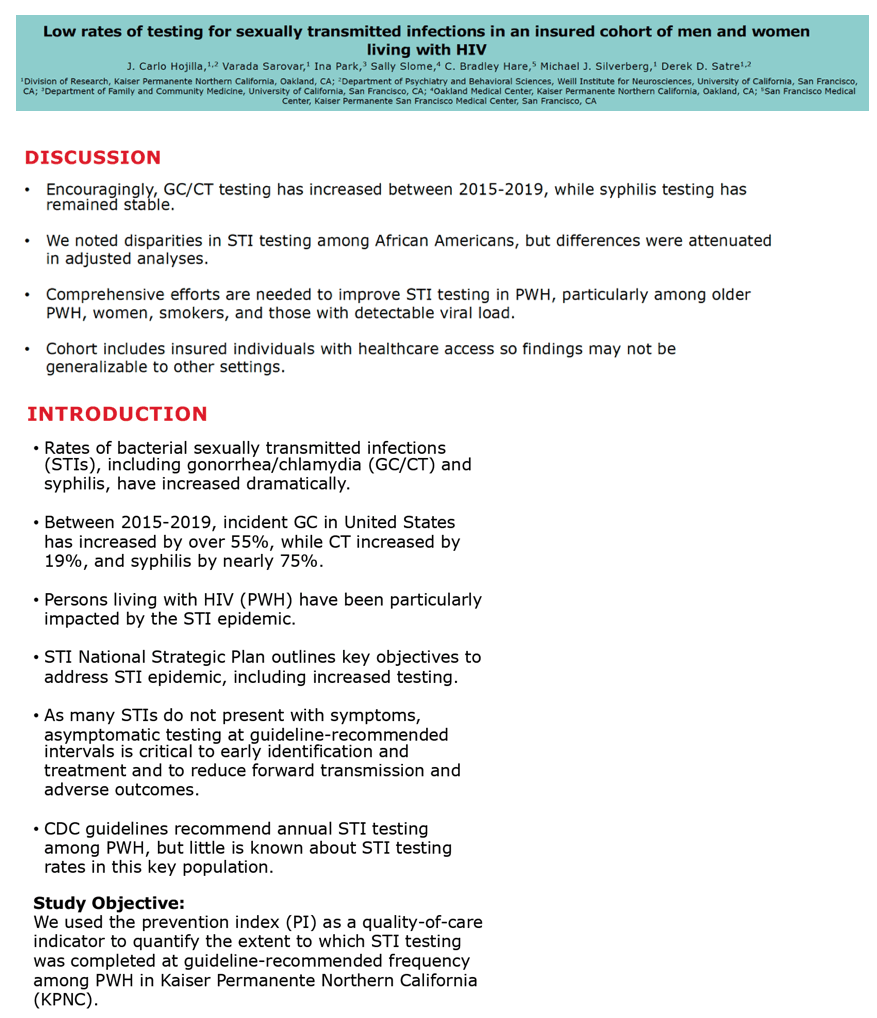
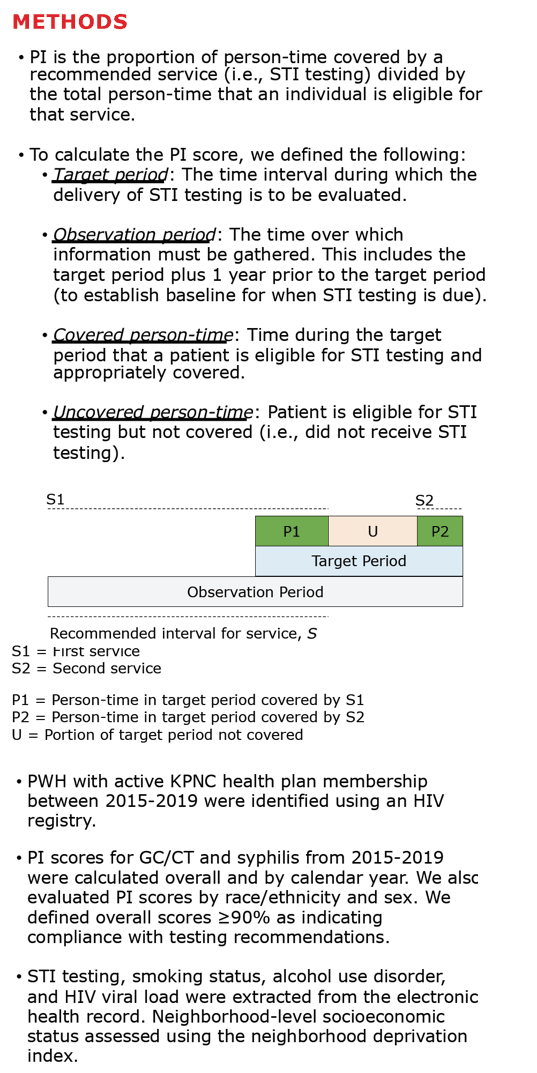
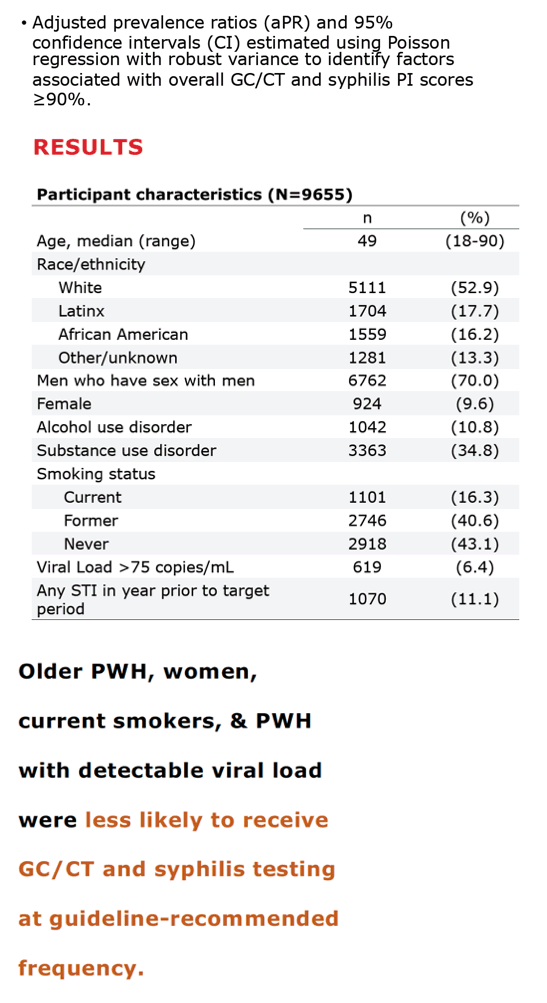
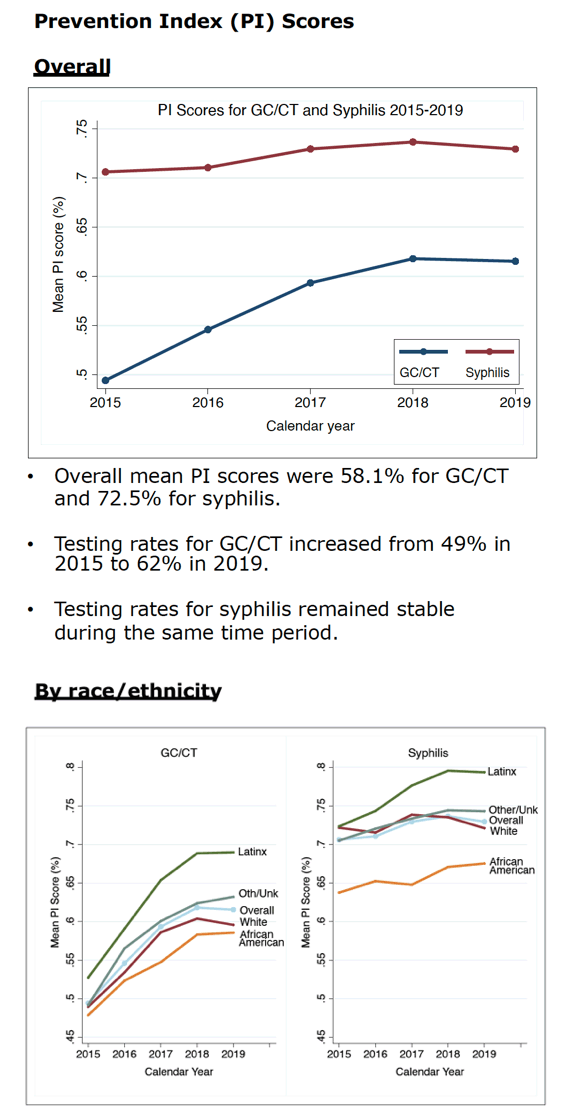
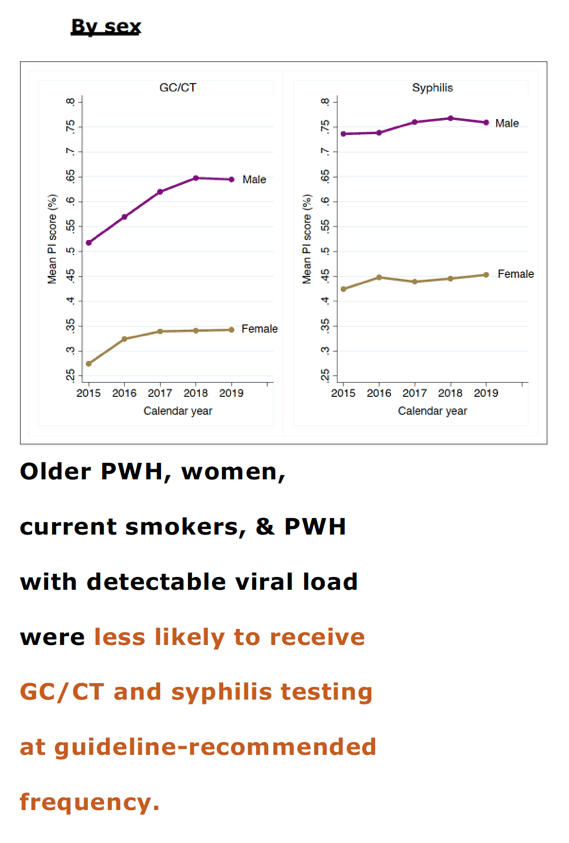
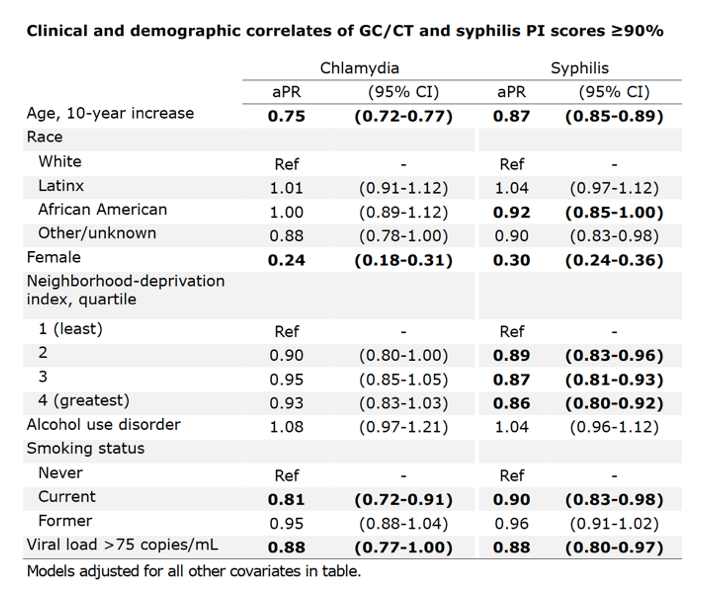
|
| |
|
 |
 |
|
|